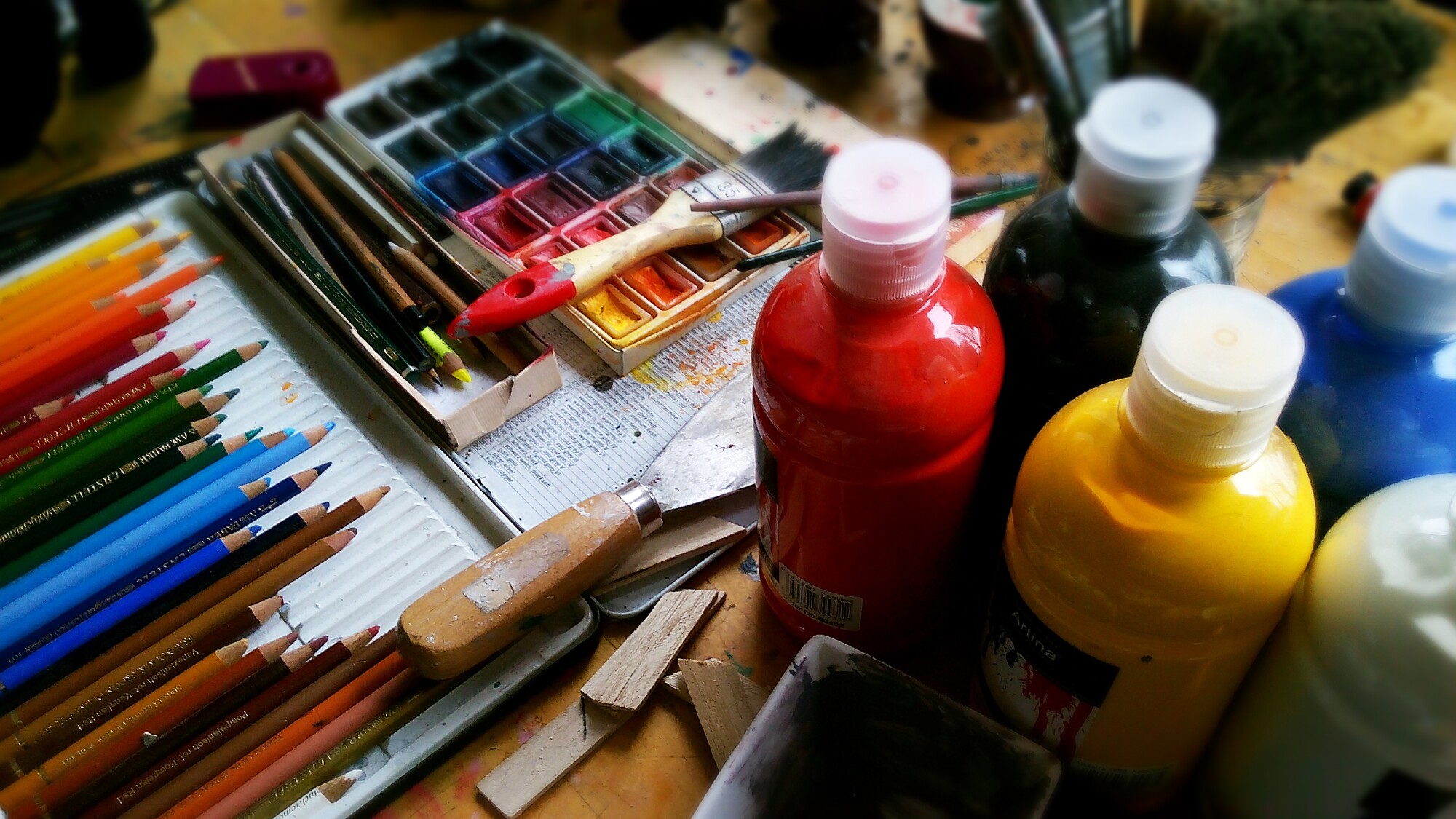Did you know that 1 in 10 Americans describe themselves as artists? Not only is art a great way to relieve some stress, but it promotes creative and mental growth.
Whether you’re new to painting or looking to take your work to the next level, there are different types of art paint to try. This guide will go over all of your options and how to use them efficiently.
Ready to learn more? Let’s get started.
Acrylic
If you’re looking for an easy painting medium to use, acrylic paint is the way to go. Acrylics are water-based, so they can easily be used at different densities simply by diluting with water. It’s also easy to clean them up with water, so they’re relatively risk-free if you’re concerned about getting your home messy.
Another beneficial quality of acrylic is its drying time. Since they dry quickly, you’ll be able to layer colors in a short period of time without worrying about the colors mixing on the canvas. You can shorten the wait time between finishing the art piece and display.
Although this works for some artists, it is a disadvantage to others. Some artists want to create new shades and tones on their canvas which is what wetter paints are used for. You can mix acrylics with additives to make the paint wet for longer, but they require some experimenting.
You can add various materials and substances to acrylic paint to alter its effect. Use rice or sand to form interesting textures. Acrylic gels allow the paint to keep its peaks on the surface for dimension.
Oil
One of the most popular types of paint is oil. This slow-drying paint is made with pigments mixed with oil, generally linseed. Solvents like turpentine can be added to alter the viscosity of the paint. Varnish tends to be applied at the top of the artwork to make it glossier.
Oil paints became popular in the 15th century and quickly surpassed tempera as the most used medium.
Oil paints are different from acrylics in that they need a “drying oil” that will eventually harden. They do not dry due to evaporation but rather polymerization, transforming the paints into a dry semisolid. This process takes longer than acrylics and other water-based paints, which allows the artist to revise the paintings slowly and deliberately.
Oil paints blend particularly well, so you can create subtle color variations and impressive light or shadow detail.
If you’re looking to feel inspired, look here now to check out an impressive lineup of pop, graffiti, and urban artists.
Gouache
Gouache paint is made by mixing gum arabic (a binder) with pigments and water. This is the same binder used in watercolor paint, but the difference here is that the ratio of pigment to water is higher. This makes gouache a thicker medium.
Certain artists will use a white chalk pigment to create a more reflective and opaque finish. Generally, this paint looks different dry than wet. Light colors appear darker and vise versa.
Fabric
If you’re interested in working on textiles, fabric paint is the best option. It is formulated to produce the best results on this surface. There are plenty of different types of fabric paints, including those that dye the fabric when applied and those that stay on the surface.
Natural fabrics like cotton, silk, and linen are the best to use fabric paints on. Just know that depending on the type of paint, they might not be able to hold up to multiple washes. If you’re nervous about your skills with fabric paint, you can always use stencils placed on the fabric and apply the paint within the lines of the shape.
Watercolor
Watercolor paints are made by mixing a water-soluble carrier and powdered pigment. These colors tend to appear quite luminous, with no fillers impairing the final hues. Watercolor paper is thick and textured, making it easy to work with this popular medium.
Watercolor paints have a high water content, so they immediately stain the paper when applied. This makes it difficult to cover with another color completely.
You can also use watercolor pencils or pastels. They look like regular pencils or pastels, but they’re water-soluble, so you can add water to blend the colors.
Tempera
Tempera is a fast-drying and water-soluble medium that consists of colored pigments being mixed with a gel-like substance such as egg yolk. There are tempera paintings from the first century that are still in good condition. This was the most popular type of paint until the 1500s, when oil painting was introduced.
Tempera is no longer made with egg yolk but with a different glue-like compound.
If you’re looking for an option for your little ones to use, tempera is ideal. It’s great for finger painting because it is washable with a bucket of water and a brush.
Types of Art Paint
Go ahead, grab a paintbrush and enjoy all of the benefits that painting has to offer. No matter what reason you have for creating art, knowing the different types of art paint can take your craft to the next level. Understanding the tools you’re using will make the process easier and the experience more enjoyable.
The best type of paint is what you feel allows you to express yourself best. Many paint brands have different levels, enabling beginners and professionals to use the same medium. Regardless of what stage you’re in, you’re sure to love the process.
Looking for more articles like this? Be sure to check out the rest of our blog!
